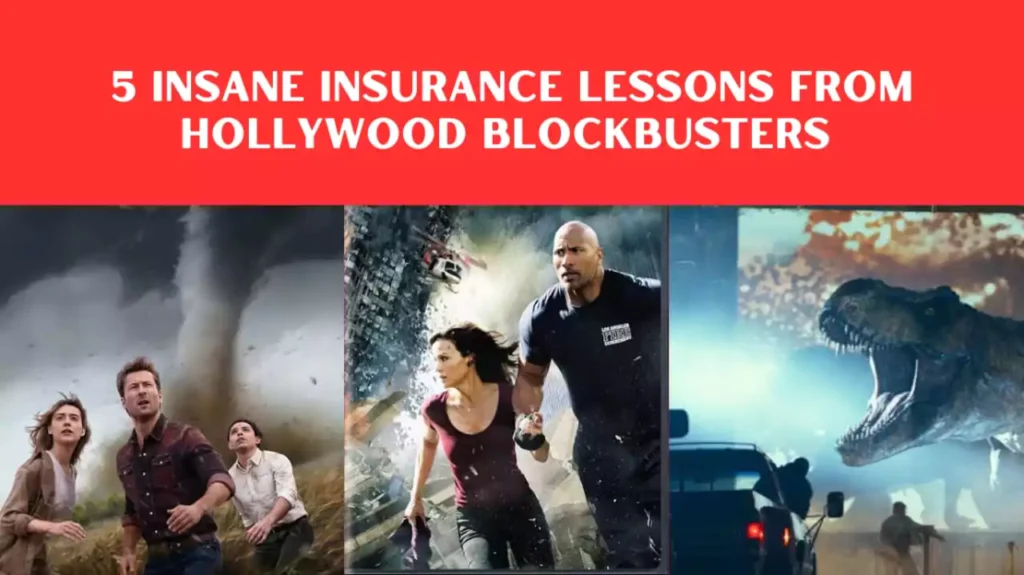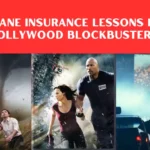Insurance might not seem like a thrilling subject, but when viewed through the lens of Hollywood blockbusters, the lessons become not just relevant, but essential. Films often reflect the risks and unpredictabilities of life, showcasing scenarios that highlight the importance of being prepared. This blog post explores the intersection of insurance and Hollywood, illustrating how these films can teach us critical lessons about risk management and preparedness.
Check out The Trending or Most Recent

Recognizing Risks
In many blockbuster films, characters encounter unexpected disasters that illustrate a universal truth: life is unpredictable. Whether it’s a natural disaster, a high-stakes heist, or a sudden accident, protagonists often find themselves unprepared. This mirrors real life, where many individuals and businesses underestimate the risks they face daily.
Case Study: “Twister”
In “Twister,” a team of storm chasers confronts the wrath of tornadoes. The film opens with a powerful scene where a young Helen Hunt and Bill Paxton witness a tornado destroy their family farm. The emotional impact of this scene resonates deeply, showing the devastation that extreme weather can cause.
According to the National Oceanic and Atmospheric Administration (NOAA), the U.S. experiences about 1,000 to 1,200 tornadoes each year, resulting in significant property damage and loss of life. Many people in tornado-prone areas either lack insurance or have inadequate coverage, believing their homes are safe. The movie emphasizes the importance of being prepared for natural disasters, showing that risk can strike when least expected.
Consider the aftermath of the Joplin tornado in 2011, which killed 158 people and caused over $2 billion in damages. A significant number of those affected did not have adequate insurance coverage, highlighting the need for awareness and preparation. As we see in “Twister,” it’s not just about facing nature; it’s about being equipped to handle the fallout.
Consequences of Unpreparedness
When characters in films fail to prepare for disasters, the outcomes can be severe. This section highlights the potential fallout from ignoring risks, prompting viewers to rethink their own situations.
Case Study: “San Andreas”
“San Andreas” dives into the world of natural disasters, specifically focusing on earthquakes. The film follows a rescue pilot, played by Dwayne Johnson, as he navigates the chaos unleashed by a massive earthquake in California.
California experiences thousands of earthquakes each year. According to the California Geological Survey, there is a 99% chance of a major earthquake occurring in the next 30 years. Many residents are unaware of their insurance options for earthquake damage, leading to significant financial losses when disasters strike.
In the film, buildings crumble, and chaos ensues, illustrating the very real risks of living in disaster-prone areas. For instance, the Northridge earthquake in 1994 caused over $44 billion in damages, and many residents found themselves unprotected because they hadn’t purchased earthquake insurance.
The film serves as a stark reminder: without adequate insurance, financial ruin becomes a possibility when disaster strikes. This prompts viewers to consider their own preparedness for such an event.
Case Study: “The Day After Tomorrow”
Another classic, “The Day After Tomorrow,” tackles the theme of climate change and extreme weather. The film portrays catastrophic weather events that lead to global chaos. As the protagonist, played by Dennis Quaid, races against time to save his son, the narrative emphasizes the unpredictability of nature.
The film’s portrayal of climate-induced disasters reflects real-life statistics. The National Centers for Environmental Information reported that in 2020 alone, the U.S. faced 22 separate billion-dollar weather and climate disasters. These figures underline the importance of recognizing risks associated with climate change.
Many individuals believe that severe weather won’t affect them, but the reality is that extreme weather events are becoming more common. Insurance companies are increasingly addressing these risks, and individuals must adapt their policies accordingly. In the film, the consequences of unpreparedness lead to loss of life and property. The urgency of the film’s message compels viewers to rethink their own risk management strategies.
Taking Action with Insurance
The lesson from these films is that while disasters are unpredictable, our responses can be proactive. Just as characters in movies face challenges, individuals and businesses can take steps to mitigate risks through proper insurance coverage.
Lesson from “Jurassic Park”
In “Jurassic Park,” the story revolves around a theme park filled with genetically engineered dinosaurs. While the park is a marvel of technology, it is also a prime example of how ignoring risk management can lead to catastrophic outcomes.
When the dinosaurs escape, chaos reigns. The park’s operators failed to account for the inherent risks of their creation, resulting in disaster. This mirrors real-world situations where businesses underestimate their vulnerabilities.
According to the U.S. Small Business Administration, 25% of businesses do not reopen after a major disaster. This statistic underscores the importance of comprehensive insurance coverage, including general liability, property insurance, and business interruption insurance.
The takeaway from “Jurassic Park” is clear: businesses must conduct thorough risk assessments and invest in appropriate insurance policies. Failure to do so can lead to not just financial loss, but potentially the end of a business. For instance, after a catastrophic event like a fire or flood, businesses that lack adequate insurance may never recover.
Action Steps for Individuals and Businesses
To learn from these films and take action, individuals and businesses can follow these steps:
- Conduct a Risk Assessment: Identify potential risks in your life or business. This could include natural disasters, accidents, or liability issues. For example, if you live in a flood-prone area, consider flood insurance.
- Educate Yourself on Insurance Options: Research various insurance policies that cover your specific risks. Consider consulting an insurance professional to tailor a policy that meets your needs. Many resources are available, including government websites and insurance brokers.
- Prepare for the Unexpected: Beyond insurance, create an emergency plan that outlines steps to take during a disaster. This should include evacuation routes, emergency contacts, and essential supplies. The Federal Emergency Management Agency (FEMA) offers templates and resources for creating emergency plans.
- Review and Update Policies Regularly: As circumstances change—whether due to a move, business expansion, or life events—make sure your insurance coverage reflects your current situation. It’s advisable to review your policies at least once a year.
- Stay Informed: Keep up-to-date with local risk factors and changes in insurance regulations. This knowledge can help you adapt your strategies over time. Subscribing to local news alerts can help you stay informed about potential disasters in your area.
Practical Examples
Let’s explore a few practical examples to illustrate these points further:
- Homeowners Insurance: If you live in an area susceptible to wildfires, like California, consider a policy that includes fire damage. After the devastating Camp Fire in 2018, many homeowners found themselves underinsured and unable to rebuild.
- Business Insurance: Small businesses often overlook the importance of liability insurance. For example, a café that serves food could face a lawsuit if a customer gets food poisoning. Adequate insurance can safeguard against such lawsuits.
- Health Insurance: The film “Contagion” starkly reminds us of the importance of health insurance. In the wake of a pandemic, having comprehensive health coverage becomes glaringly obvious. Those without insurance may face overwhelming medical costs.
Conclusion: Lights, Camera, Insurance Action!
Hollywood blockbusters often provide more than just entertainment; they offer valuable lessons about preparedness and risk management. The themes of chaos and disaster in films like “Twister,” “San Andreas,” and “Jurassic Park” resonate with real-life risks we all face.
By recognizing the unpredictability of life and taking proactive steps to secure appropriate insurance coverage, individuals and businesses can safeguard against potential losses. So, the next time you find yourself engrossed in a nail-biting scene on screen, remember that these stories can serve as a wake-up call to assess your own risks and insurance needs.
In the grand theater of life, the best insurance policy isn’t just a piece of paper; it’s your ticket to peace of mind, ensuring that when life throws a curveball, you’re ready to face it head-on. Prepare today so that when the unexpected happens, you can respond with confidence and resilience. Let’s take these lessons from Hollywood and apply them to our lives—because preparedness is the best script we can write.
What types of insurance should every homeowner consider?
Homeowners should consider property insurance, liability insurance, and coverage for natural disasters relevant to their location, such as flood or earthquake insurance.
How often should I review my insurance policies?
It’s recommended to review your insurance policies at least once a year or after significant life changes, such as moving, starting a business, or adding family members.
What is the difference between actual cash value and replacement cost in insurance?
Actual cash value considers depreciation, while replacement cost covers the full cost of replacing an item without factoring in depreciation.
Do I need special insurance for my business?
Yes, businesses typically require various types of insurance, including general liability, property insurance, and potentially specialized coverage based on their industry.
How can I determine how much insurance coverage I need?
Start by conducting a risk assessment to identify potential hazards, then consult with an insurance professional to evaluate your specific needs and recommend appropriate coverage levels.






